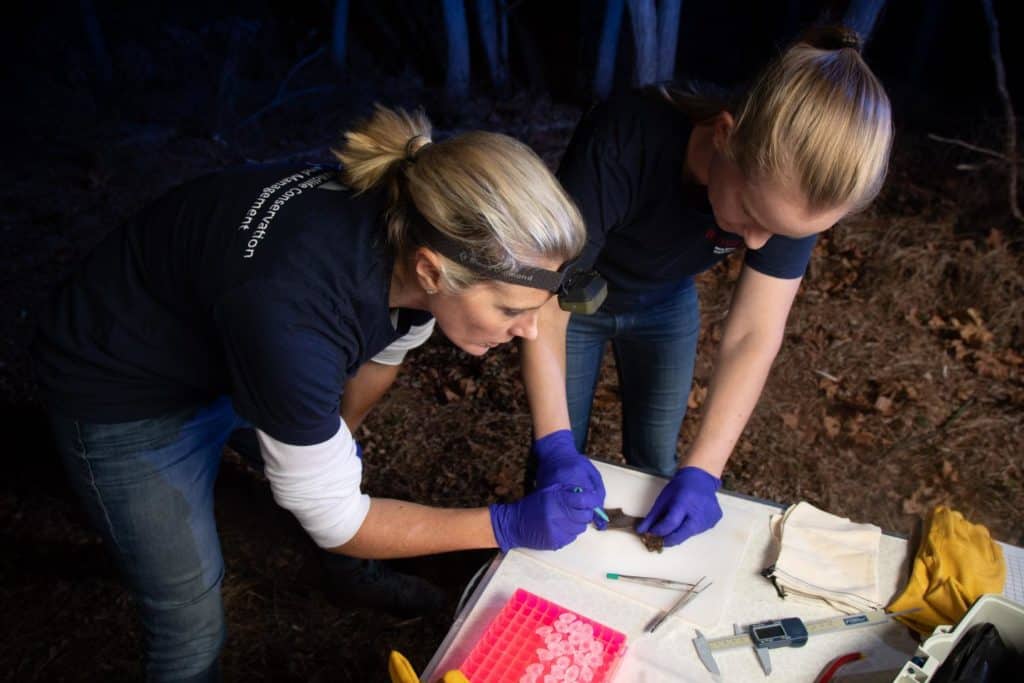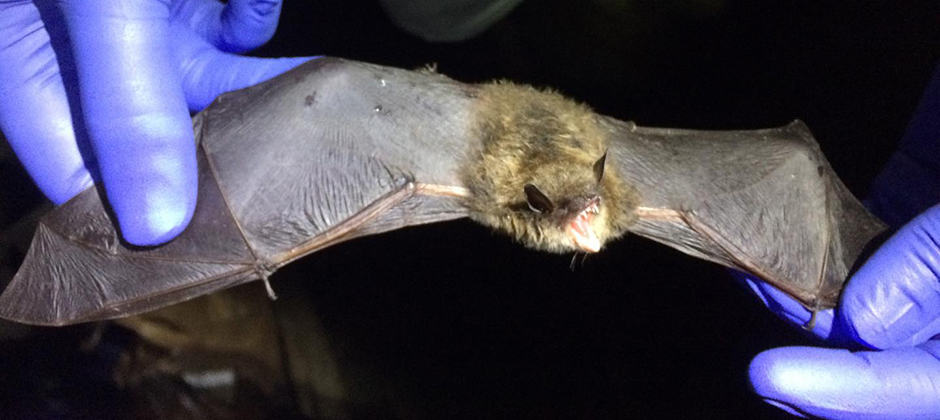Share this article
Genes let some bats survive white-nose syndrome
Little brown bats that survive the deadly white-nose syndrome have different genes than those that have died from it, researchers found, suggesting an evolutionary path for bats to survive a disease that has decimated bat populations.
“White-nose syndrome has been a devastating disease for bats in North America, specifically little brown bats, which are the worst-affected species,” said Sarah Gignoux-Wolfsohn, an ecologist at the Smithsonian Research Center. “We noticed that in spite of the initial devastating declines in population, some of the populations were persisting and recovering.”
White-nose syndrome is a disease caused by the fungus Pseudogymnoascus destructans, which has decimated bat populations in the United States and Canada. The fungus, named for the white fungus that shows up on bats’ muzzles, ears and wings while they’re hibernating, thrives in caves and mines that bats use because of the cold and humid conditions. Gignoux-Wolfsohn, a postdoc at Rutgers University at the time of the research, led a study published in Molecular Ecology looking at the genes of bats that died from the disease versus those that survived.
Fortunately, she had collaborators in New Jersey, New York and Vermont, where the disease first appeared, who collected samples of little brown bats (Myotis lucifugus) during initial mortality events. Among the first people to find the dead bats in caves, they collected the carcasses and placed them in freezers, where they stayed for years, awaiting further research.

Brooke Maslo and Kathleen Kerwin, of Rutgers University-New Brunswick, collect a tissue sample from a little brown bat for genomic analysis. Credit: John O’Boyle
“They actually had the forethought to say ‘we have to save some of these,’” Gignoux-Wolfsohn said.
Her team took genetic samples from the bats in the freezer and set out into some of the caves where the bats came from to gather samples from survivors.
“What really surprised me and was very exciting about this is, first of all, we did see genetic differences between the ones that died and the ones that survived,” she said.
Initially, the team though they would find differences in their immune systems. Instead, they found genetic differences were focused on the bats’ hibernation and metabolism. That makes sense, Gignoux-Wolfsohn said, because white-nose syndrome affects bats while they are hibernating, waking them up prematurely. The genetic differences may mean some bats are more likely to wake up and become active than others.
“When they’re hibernating, they conserve energy and fat stores for the winter,” she said. “When they wake up, it uses up those energy stores, and they die from starvation.”
The study shows that evolution is happening in response to the disease, Gignoux-Wolfsohn said. “Bats can survive, but how exactly that is related to their behavior and their metabolism, we need to do more work to figure out,” she said.
The study may mean good news, the team found, since it suggests that bats may be able to rapidly evolve and survive mortality events like white-nose syndrome. It may also help managers focus on populations most in need of conservation efforts.
“There are treatments to treat individual bats,” she said. “But we don’t have the resources to treat every single bat.”
Gignoux-Wolfsohn and her colleagues plan to repeat this study on other species, such as the Indiana bat (Myotis sodalis). Those bats are also affected by white-nose syndrome, but have faced much more gradual population declines.
Header Image: This little brown bat survived white-nose syndrome. Credit: Sarah Gignoux-Wolfsohn








